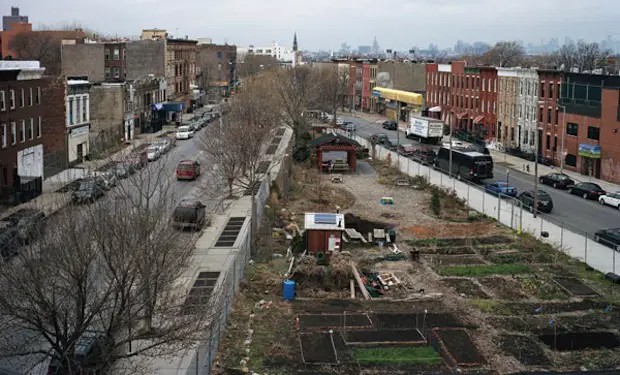Cycling to work the other day, I found myself waiting at a set of traffic lights that signal when cyclists may cross the ever-busy Goswell Road. It’s a rare sight in London to see cycling considered in such a way, though hopefully this is set to change soon. Most days nothing much happens where this separated cycle lane meets the pavement before joining the road, but recently a funny event I would normally shrug off struck me as intriguing. As I waited at the red light and cyclists began to accumulate behind, a few others sat a little further ahead, such that they were now obstacles to pedestrians using the pavement. And as we sat there, patiently watching the rest of the city flow by, an old man, clearly frustrated with those blocking the pavement ahead thought he’d tell us that “these are the ones that give you lot a bad name!”
“What lot?” I suddenly thought, before realising he meant ‘cyclists’ – that dreaded term. Ask your friends to draw a picture of a ‘cyclist’ and they’ll come up with something probably more akin to Bradley Wiggins than otherwise. On TV and radio debates, too, mention of ‘cyclists’ brings up the old favourite about running red lights or an otherwise miscreant individual, probably wantonly running down old ladies. It’s true that in London many cyclists are male working professionals probably wearing some form of lycra. They’re like this because they’ve managed to adapt a type of ‘cycling’ to London commuting. They’re able to keep up with traffic, impose themselves similarly to a motorised vehicle and negotiate the urban car-scape. But that shouldn’t mean they’re all necessarily running down old ladies or ignoring red lights.
If you’re caught up in this debate, you’ll have heard Bath based psychologist, Ian Walker, describe this behaviour as characteristic of ‘outgrouping’: the “overgeneralisation of negative behaviour and attributes – e.g. ‘They all ride through red lights all the time’’. And even he’s aware that there’s more to it than just that. Beyond being an outgroup, cyclists are also a minority. As such they suffer doubly at the hands of this socio-psychological tendency and, what’s more, their behaviour goes against the desirable social norm here in Britain of reaching adulthood and driving a car. Cycling is thus framed as anti-conventional child’s play (hatred of cyclists is another issue entirely – I’ll get to it at some point in the future). London commuter cycling has found a way to fit in, however awkwardly, to the automobile society we’ve built over the past 70 years.
Over the course of the post-war period, transport has increasingly equated to driving. It’s been a time over which we’ve built flyovers, gyratorys, motorways, traffic lights, suburbs, multi-story car-parks, out-of-town retail centres, paved over front gardens and built garages for parking; created the driving licence, invented a host of criminal offences and written the highway code to regulate people’s behaviour whilst developing a plethora of much less noticeable cultural expectations around diving – it has it’s own citizenship and moral order (ever notice talk of the good driver?). Oil has equated to both money and geopolitical power across the globe. Everyone has been caught up by the promise of Automobility – that fast, private transport on demand.
It’s not only how we get around, but how things get to us. The more we’ve built for, regulated and normalised driving, the more we’ve found driving an inescapable necessity. Nowadays it’s hard to image a world without them. It’s safe to say ‘driving’ is more than just hopping in a car to go somewhere, it’s a massive conglomerate of technologies, social relations, cultural expectations, built environments, supply chains and so on; what sociologist, John Urry, calls the ‘System of Automobility’.
Cycling and cyclists today are very much defined by their deference to this system. But as a more democratic form of everyday cycling is gradually being built for, the image of cycling will hopefully change and with it the skills and things needed to take part – fewer thighs of Hoy, lycra of Mr. Motivator and four lane roundabout negotiation, just normal clothes, normal bikes being ridden comfortably in a space no longer dominated by fast moving, powerful traffic.
For the time being, if you find yourself in the Monday morning peloton of the employed and working heading for central London there is a sense of camaraderie. Fall off and there’ll likely be some fellow bikers hop off and help you up. Get cut up by a seemingly impatient driver and you’ll be able to tut, sigh, gesture or even discuss your frustration with a rider nearby – there’ll be an empathetic audience to share your ‘pain’. So if we are supposedly a ‘lot’ – a category of people with a bad reputation because we cycle – it’s internally defined by the way we see, feel, hear, expect and anticipate events on the road from the same, fearful and vulnerable perspective. As a ‘cyclist’ there might be stronger ties elsewhere in our lives – the bike a key part of middle-class aspirations to lead a sustainable life, an outward expression of environmentalism, or our means of attaining a fit and healthy body – but for the great majority of us, the only thing in common is this perspective on the city and it’s dominant transport system. Let’s hope that as more of us experience this, more of us realise what must change.
Nicholas Sanderson holds a BSc in Geography from the University of Edinburgh, where his interests fell on Urban Studies and Mobilities. He writes about social science’s teachings on how we use things, buildings and infrastructure.
Image via Sustrans


